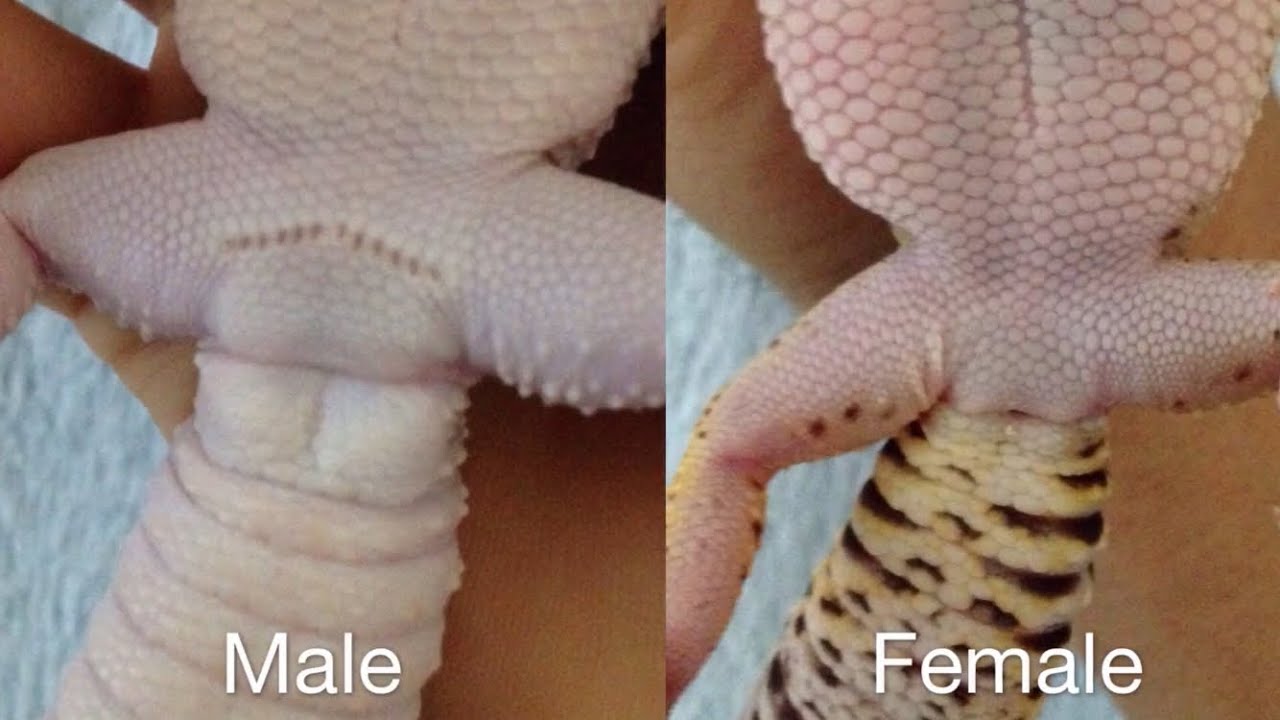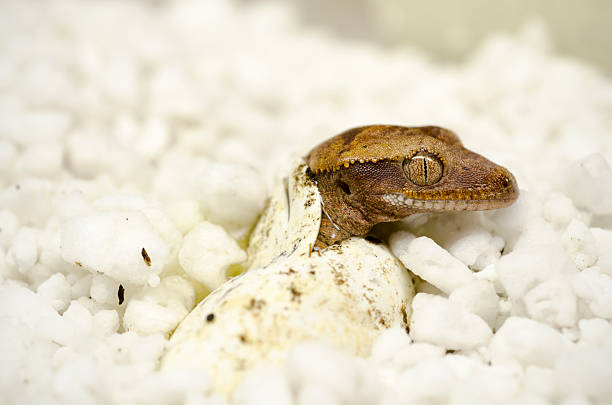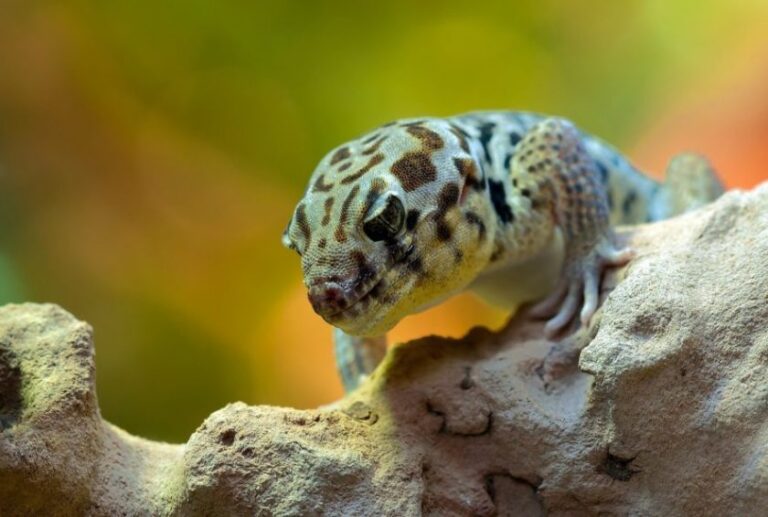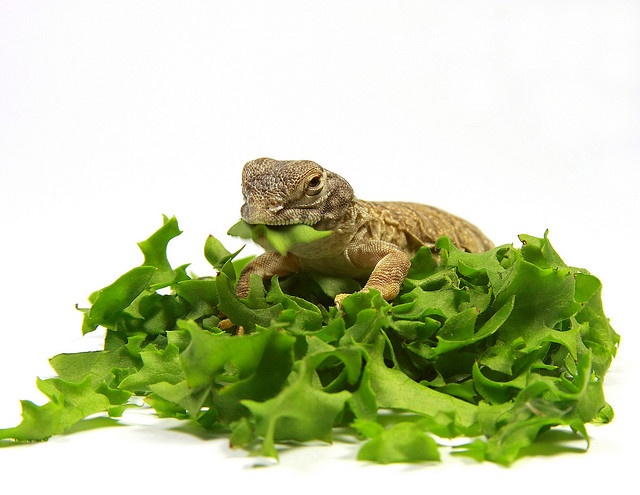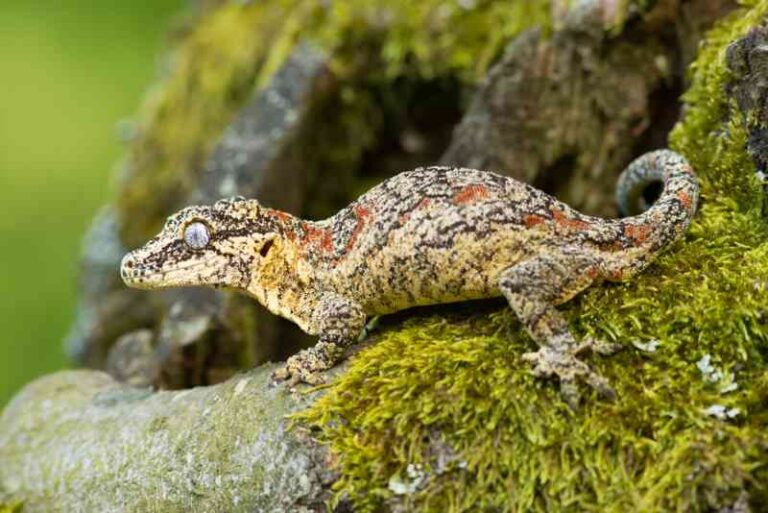How To Tell If Leopard Gecko Is Male or Female
As a passionate reptile enthusiast, I vividly recall the day I brought home my very first leopard gecko, a charming and mysterious creature named Gizmo. Gizmo quickly became the star of my collection, captivating me with its unique personality and striking appearance. However, one question that continually gnawed at me was, “How can I tell leopard gecko is a male or female?”
If you’ve ever found yourself in the same perplexing situation, you’re in the right place.
To determine your leopard gecko’s gender, wait until it’s 6-12 months old. Check its tail: males have two noticeable bulges and larger, darker V-shaped pores. They’re also larger with wider heads.
Also, the incubation temperature can also hint at gender: warmer means male, and cooler means female. In a nutshell, age, tail appearance, size, and incubation temperature are your clues to tell whether your gecko is a male or female.
Let’s embark on this thrilling adventure together and unlock the mysteries of your beloved pet’s identity.
Why Is It Important To Know The Gender Of Your Leopard Gecko?

Naming: Assigning an appropriate name is often the first and most immediate reason. Many owners prefer to give their pets names that reflect their gender. While unisex names are an option, knowing the sex allows for a more personalized and meaningful choice.
Breeding Plans: If you have intentions of breeding, determining their sex is crucial. Successful breeding requires a male and female pairing. Knowing the gender of your gecko helps you plan for mating and, if necessary, acquire additional geckos of the opposite sex to facilitate breeding.
Temperament and Health: Both exhibit different behaviors and metabolic patterns. Understanding your gecko’s sex enables you to anticipate and interpret these behaviors.
For instance, males can become nervous and aggressive during the breeding season, while females may stop eating when ovulating and carrying eggs. Recognizing these gender-specific traits aids in monitoring your gecko’s health and well-being.
Social Compatibility: If you intend to keep multiple, knowing their genders helps you create harmonious social dynamics within their enclosure. Males can be territorial and may not coexist peacefully, whereas females can typically live together without issues.
Targeted Care: Some aspects of care, such as dietary needs or enclosure setup, may vary slightly based on gender. As example, pregnant females may require different care considerations. Knowing the sex of your gecko allows you to tailor their care to their specific requirements.
How to identify the gender of Leopard gecko?
Wait for Maturity: Leopard geckos don’t exhibit significant sex differences until they reach full maturity, typically between 6 to 12 months of age. Attempting to determine their sex before this age won’t yield conclusive results.
Pre-Anal Pores: One prominent indicator of a male gecko is the presence of larger and more visible pre-anal pores. These pores form a V-shaped line of brown dots on the gecko’s belly, slightly above the base of its tail.
Also, Male one secrete a waxy substance from these pores, containing pheromones used for attracting females during mating. Female geckos may have pre-anal pores, but they are usually faint and often clear rather than brown.
Hemipenal Bulges: While examining the underside of your gecko, focus on the area below their vent, which is located at the base of their tail where they defecate and reproduce. Male geckos exhibit distinctive hemipenal bulges on both sides of this region. These bulges house their reproductive organs, which females lack. Consequently, the base of a female gecko’s tail typically appears flat.
Femoral Pores: Another distinguishing feature is the size and color of femoral pores, found on the underside of the gecko’s upper thighs. In males, these pores are larger and appear as a series of brown or tan dots running horizontally across the thigh.
In addition, these pores release an oily substance filled with pheromones, which geckos use for communication and mate attraction. Although female one also possess femoral pores, they are considerably smaller and often barely visible.
Other tricks to determine the gender of geckos:
Ask the Breeder: If possible, inquire with your breeder about the incubation temperature used for your gecko’s eggs. However, not all breeders may have this information readily available.
Size: Male leopard geckos typically exhibit slightly larger dimensions than females. Males tend to range from 8 to 11 inches (20-28 cm) in length, while females are usually around 7 to 8 inches (17-20 cm) long. Keep in mind that size alone is not the most definitive indicator due to potential overlap.
Head Size: In addition to length, observe the size of your gecko’s head. Male geckos often have wider and bulkier heads compared to females, who typically have slender, thinner heads.
Weight: While the weight difference between male and female leopard geckos is subtle, males usually weigh between 2 to 2.8 ounces (60-80 g), whereas females typically weigh in the range of 1.7 to 2.4 ounces (50-70 g).
Egg Laying: Female leopard geckos have the capability to lay eggs, even without a male present. While this may seem like a straightforward method, it’s not foolproof, as these eggs will be infertile. Therefore, patiently waiting to see if your gecko lays eggs is not the most definitive way to determine its gender.
What are some key steps to ensure the safe and stress-free handling of a leopard gecko?
Approach with Care: Approach cautiously and be attentive to signs of anxiety or fear. If they appear calm and approach your hand when you place it in their enclosure, gently scoop it up from beneath their belly.
However, if they are hiding, drooping their tail, or running away, it’s essential to give them space and wait for them to calm down before attempting to handle them. Stress can lead to tail dropping, which you want to avoid.
Maintain a Gentle Grip: When holding your gecko, maintain a loose grip to prevent them from feeling trapped or threatened. Gently grasp them on either side of their body and hold them vertically in front of your face. Avoid holding them on their back or squeezing them tightly, as this can cause discomfort and stress.
Use a Clear Container if Necessary: If your pet is struggling or unwilling to be handled, it’s important not to force the interaction. Instead, you can use a clear plastic container to examine their underside without direct contact. Hold the container above your head to get a clear view of your gecko’s belly.
Similarities between male and female leopard geckos:
Comparable Lifespans: Both male and female leopard geckos typically share a similar lifespan, ranging from approximately 15 to 20 years, provided they are not used for breeding purposes.
Uniform Feeding Requirements: Their dietary needs and feeding plans are essentially the same. When crafting a feeding regimen, the primary considerations are their age and weight, unless breeding is in the picture.
Parallel Care and Husbandry: The care and husbandry requirements for both genders are nearly indistinguishable. They thrive under similar environmental conditions and necessitate consistent care routines.
Beginner-Friendly: Whether you choose a male or female leopard gecko, both make excellent choices for new reptile owners. Their ease of care and docile nature contribute to their suitability for beginners.
Uniform Pricing: The pricing for both male and female leopard geckos, especially for unsexed baby geckos, tends to be identical. This makes the choice of gender less of a consideration when acquiring one as a pet.
Identical Morphs: Morphs, which denote distinct color or pattern variations resulting from selective breeding, are equally applicable to both male and female leopard geckos. These captivating variations are a shared feature among both sexes.
FAQs
Is It Better To Have A Male Or Female?
The choice between a male or female leopard gecko depends on your preferences and breeding goals. Males tend to be larger and have specific behaviors, while females may be more docile. Consider your objectives when making this decision.
Can you tell the gender of a baby leopard gecko?
No, Determining the gender of a baby leopard gecko can be challenging. It’s usually more accurate when they’re 6-12 months old and exhibit distinctive characteristics like tail bulges and pores.
Can you influence the gender of an unborn leopard gecko?
Yes, You can influence the gender of an unborn leopard gecko to some extent by controlling the incubation temperature. Warmer temperatures often produce males, while cooler temperatures tend to result in females. However, this isn’t a guaranteed method.
Final word
In conclusion, figuring out whether my leopard gecko is male or female has been an exciting journey of discovery. By patiently waiting until the gecko is 6-12 months old and then examining its tail for those distinctive bulges and pores, I can confidently determine its gender. Additionally, taking note of size differences and considering the incubation temperature further reinforces my understanding.
Further, this knowledge not only enhances my connection with my gecko but also ensures I can provide the best care possible. So, to all fellow gecko enthusiasts, embrace the adventure of gender identification – it’s a rewarding aspect of our shared passion for these incredible creatures.

